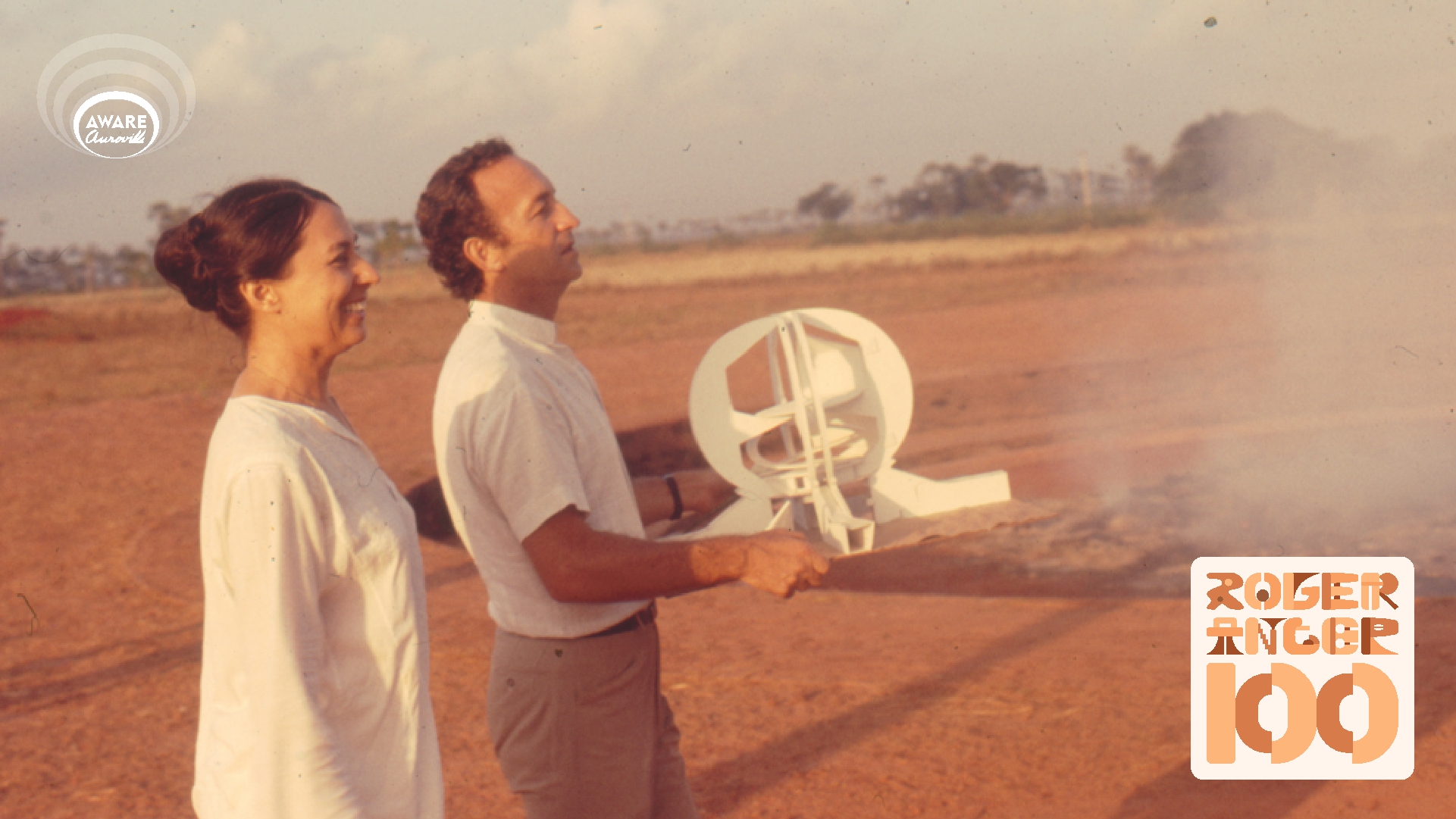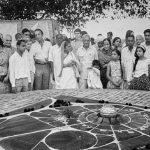
At the age of 45, Roger Anger had already executed over 50 large-scale projects, and significantly contributed to modern architecture in France . A Paris guide to Modern Architecture cites seven of his projects. “Simple in conception but complex in treatment” is how his approach had been summarised in French architectural essays of that time. The most spectacular highlight of his work was L’Ile Verte, Grenoble , then the highest inhabited residential buildings in Europe, and awarded the Brussels Premier Prix International d’Architecture in 1967.
Anger’s work integrated elements of modern and abstract ornamental art. Having graduated in 1947 from the Ecole des Beaux-Arts, he was equally passionate about painting and sculpture. His studio was full of artwork that he continuously churned out in large numbers till his last days. He lately worked with recycled plastic bottles and lids, egg crates, and other ‘waste’. He had said that this was where his research for beauty was being conducted.
In 1966, he was appointed Chief Architect of Auroville. Together with Pierre Braslawski and Mario Heymann he developed a concept for the city. Anger had kick-started the experimental spirit through his earliest projects and on a barren, eroded land, sowed the seeds of architectural experiments and research for years to come.
His early houses and schools demonstrated exemplary innovations at various levels. Architects and aspirants who were absorbed into Anger’s office, earlier in Pondicherry and later in Auroville, recall the high concentration of creative energy and collective work in those early days when the excitement of this idealistic project was still fresh.
He produced proposals for other towns: Salem , Kudremukh, and Faridabad . His last project — Matrimandir — a highly complex building that could be practically hand-made, thanks to years of assistance from Jacqueline La Coste, his partner; Piero Cicionesi; and a collective effort of the residents is nearing completion in spite of difficult circumstances. For many, it is natural that such outstanding projects take years to build, but Anger maintained that this was unnecessary, and that a lot of time was being wasted.
Roger Anger, like many visionaries, faced a lot of struggle. Ever since his client, ‘the Mother’ passed away, Auroville plunged into a struggle regarding collective organisation and decision-making; and Anger’s role and authority was endlessly questioned by those residents who had comfortably settled into an organically growing settlement, originally intended and inaugurated as a planned city.
From 1978 to 1985, he had left Auroville, with a sense of hopelessness and paralysis, but reappeared when conditions seemed more favourable. Sadly, he didn’t realise any further architectural project. All his energy was spent on creating conditions for the city to come.
His responsibility was to ensure the urban form of Auroville, and his last efforts revolved around the creation of a suitable governance structure that would promote the development of a city rather than a short-sighted one suited for the day-to-day activities of a handful of people. “I am trying to save what can still be saved,” he had said. Roger Anger was a member of Auroville’s Governing Board.
Anger had hoped that the Aurovilians would manage to go beyond internal polarities between developing and remaining nostalgic, and finally unblock the city and an urban life as opposed to widespread decentralised communities.
The aim of architecture was to manifest a high standard of beauty, he said, “Beauty has the power of uplifting the consciousness, spontaneously…”
For me, he has been an intriguingly rare personality who could maintain the widest of vision and simultaneously pay attention to the smallest of details. A refined and heroic being, straight-forward and courageous, who led a disciplined balanced life, and rarely skipped his afternoon game of chess, “its one game, where nothing can occur by chance, you create everything.”



